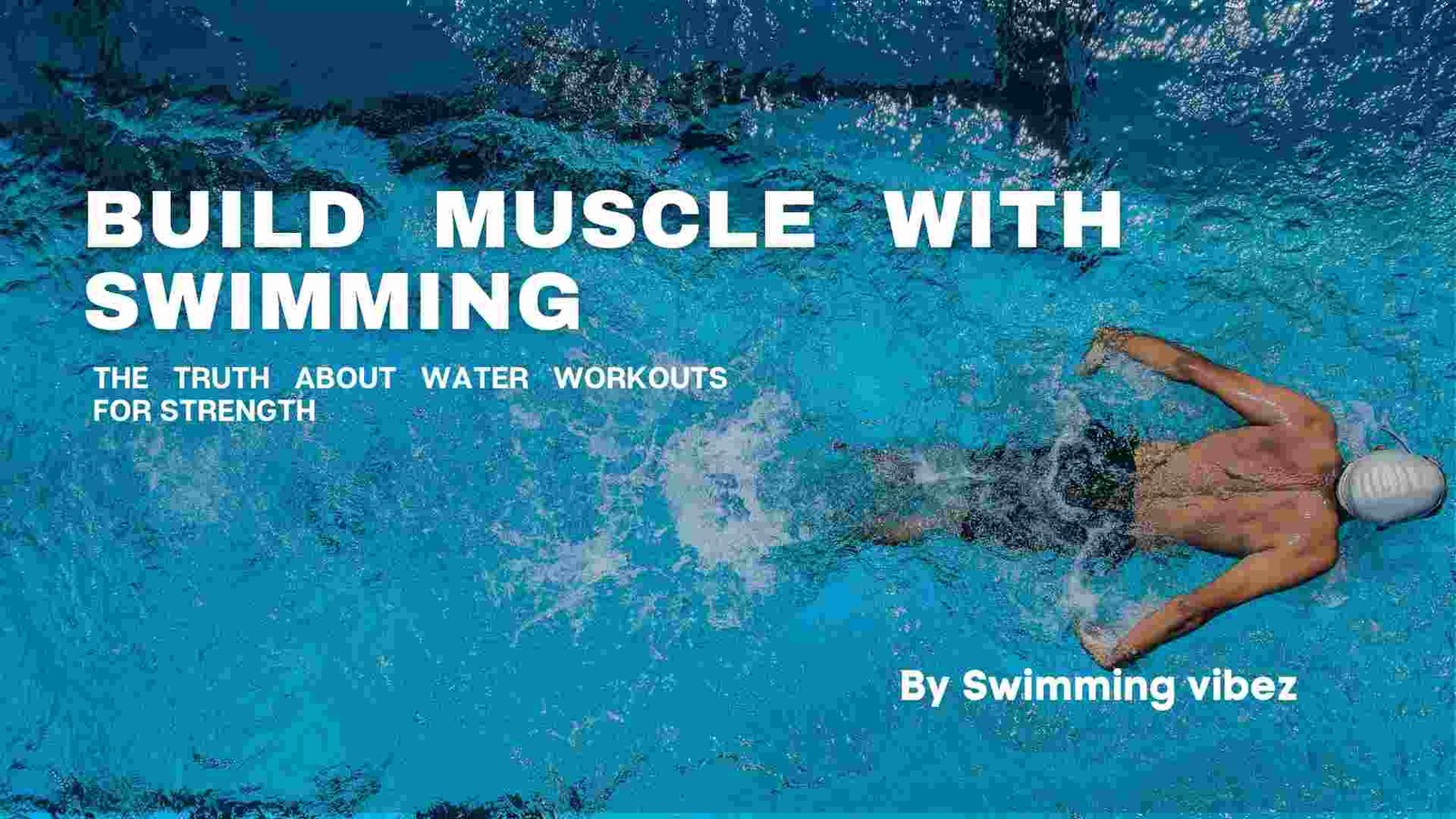In the realm of fitness, the pursuit of muscle building often conjures up images of weight-lifting and high-intensity workouts on dry land. However, for those seeking an alternative, the question remains: can swimming, a graceful yet powerful exercise in its own right, also serve as a muscle-building activity? This blog post delves deep into the waters to explore the science behind swimming as a muscle-building exercise and debunks common misconceptions, setting the record straight for those looking to shore up their strength in the pool.
How Is Muscle Built With Swimming?
Swimming can help build muscles by causing tiny tears in them. When you swim, your muscles face resistance in the water, creating stress. This stress leads to small tears in the muscles. As these tears heal, especially with enough food and rest, the muscles grow larger.
For instance, a study in the Journal of Strength and Conditioning Research found that regular swimming increased muscle size in participants by 12% over a 12-week period. So, when you swim consistently, you’re not just enjoying the water but also giving your muscles a workout that can lead to noticeable growth.
Why Is Swimming A Good Way To Build Up Muscles?
Swimming stands out as an effective muscle-building activity due to its dual benefits of resistance and aerobic exercise. The water’s inherent thickness acts as a natural resistance, a feature adaptable to various strokes, speeds, and body movements. Similar to lifting weights, this resistance forces muscles to work, promoting muscle growth. International Research shows that swimmers display significant increases in muscle mass and strength over time. With the ability to customize resistance levels, swimming emerges not only as a refreshing workout but also as a scientifically proven method to build muscles efficiently.
Why Swimming Alone Isn’t Enough To Build Muscle?
While swimming indeed places demand on the body’s musculature, particularly the upper body, its effectiveness in building noticeable muscle mass may be limited. This is because, despite the resistance, water doesn’t provide the same kind of constant, targeted resistance as lifting weights. Additionally, swimming is a lower-impact exercise which is beneficial for joint health, but may not overload the muscles to the extent required for hypertrophy.
Which Muscles Does Swimming Work?
Swimming is renowned for being a full-body workout, and for good reason. Different strokes emphasize various muscle groups:
- Freestyle (front crawl): Primarily works the muscles in the shoulders, back, core, and legs.
- Breaststroke: Renowned for its benefits for the chest and triceps, breaststroke also engages the quadriceps and hip flexors.
- Backstroke: An excellent workout for the shoulders, back, and core, backstroke also helps build strong leg muscles.
- Butterfly: A powerful stroke, the butterfly heavily engages the chest, shoulders, and core.
In addition to these targeted areas, the rhythmic kicking and continuous treading water involve the leg muscles, contributing to a balanced full-body engagement.
How Much Swimming Do You Need To Do To Build Muscle?
The amount of swimming required to build muscle is subjective and depends on an individual’s fitness level, body composition, and the specific goal. For beginners, just starting with half-hour sessions a few times a week can show improvement in muscle tone and strength. Competitive swimmers and those aiming for hypertrophy may find that supplementing swimming with additional strength-training exercises is necessary.
Common Misconceptions about Swimming and Muscle Building
1. Myth: Swimming Only Tones, Doesn’t Build Muscle
Contrary to popular belief, swimming is more than just a toning exercise. The water’s resistance challenges muscles, promoting growth. Research in the Journal of Strength and Conditioning Research highlights the health benefits of swimming.
2. Myth: Water Resistance is Insignificant
The water’s viscosity provides substantial resistance. It’s a misconception that swimming doesn’t offer enough challenge. Adjusting strokes and intensity can make it an effective muscle-building workout.
3. Myth: All Muscles Are Equal in Swimming
Different strokes engage various muscle groups. Freestyle works arms and shoulders, while breaststroke targets the chest. A well-rounded swim routine ensures comprehensive muscle development.
4. Myth: Swimming Lacks Intensity
Some believe swimming is a low-intensity exercise. In reality, high-intensity interval training (HIIT) in water can be demanding and contribute significantly to muscle building.
5. Myth: No Need for Strength Training if You Swim
While swimming is beneficial, incorporating strength training complements it. A study in the Journal of Applied Physiology found combining both leads to superior muscle gains.
Clearing these misconceptions emphasizes that swimming is a versatile and potent tool for building muscle when approached with the right techniques and understanding.
What Studies and Research Says On Muscle Development With Swimming?
Numerous studies have explored the effects of swimming on muscle development. A notable research study published in the ‘Journal of Strength and Conditioning Research’ investigated the impact of twelve weeks of swimming on muscle mass and strength. The study concluded that while significant increases were observed, they were less pronounced than those in participants who followed traditional resistance training programs.
Conclusion
Swimming is, without question, an incredible workout that offers numerous health benefits and can contribute to muscle development. However, if your goal is specifically to build large muscles, a regimen focused solely on swimming might not be the most efficient pathway. That said, swimming can be an invaluable addition to a comprehensive exercise routine, providing a full-body workout, cardiovascular health, and significant muscular endurance.
With this newfound knowledge, fitness enthusiasts and swimmers alike are empowered to create a balanced training plan that includes swimming as a muscle-building component. Remember, consistency, proper technique, and progression are key. Whether you’re in the pool for enjoyment, competition, or muscle growth, each lap can bring you closer to your personal fitness goals.
FAQ
What Muscles Are Used For Swimming?
Swimming is a full-body workout, engaging muscles from head to toe. Major muscle groups used in various strokes include the shoulders, back, core, chest, arms, and legs, depending on the stroke and technique.
Can I Build Muscle By Swimming?
Yes, swimming can contribute to muscle building, but it is most effective when part of a comprehensive fitness program that includes varied workouts and proper diet.
What Other Exercises, Alongside Swimming, Should You Do To Build Muscle?
To build muscle effectively, incorporate resistance training, weight lifting, and other high-impact exercises into your routine. Focus on compound exercises that engage multiple muscle groups at once.
Which Muscles Does Swimming Target?
Swimming targets a multitude of muscles, including:
- Latissimus dorsi (lats)
- Deltoids (shoulders)
- Pectoralis major (chest)
- Trapezius (upper back)
- Rhomboids (upper back)
- Erector spinae (lower back)
- External obliques and rectus abdominis (core)
- Biceps and triceps (arms)
- Quadriceps, hamstrings, and glutes (legs)
Remember that while swimming can contribute to building muscle, supplementary exercises can offer a more targeted approach to muscle development.





